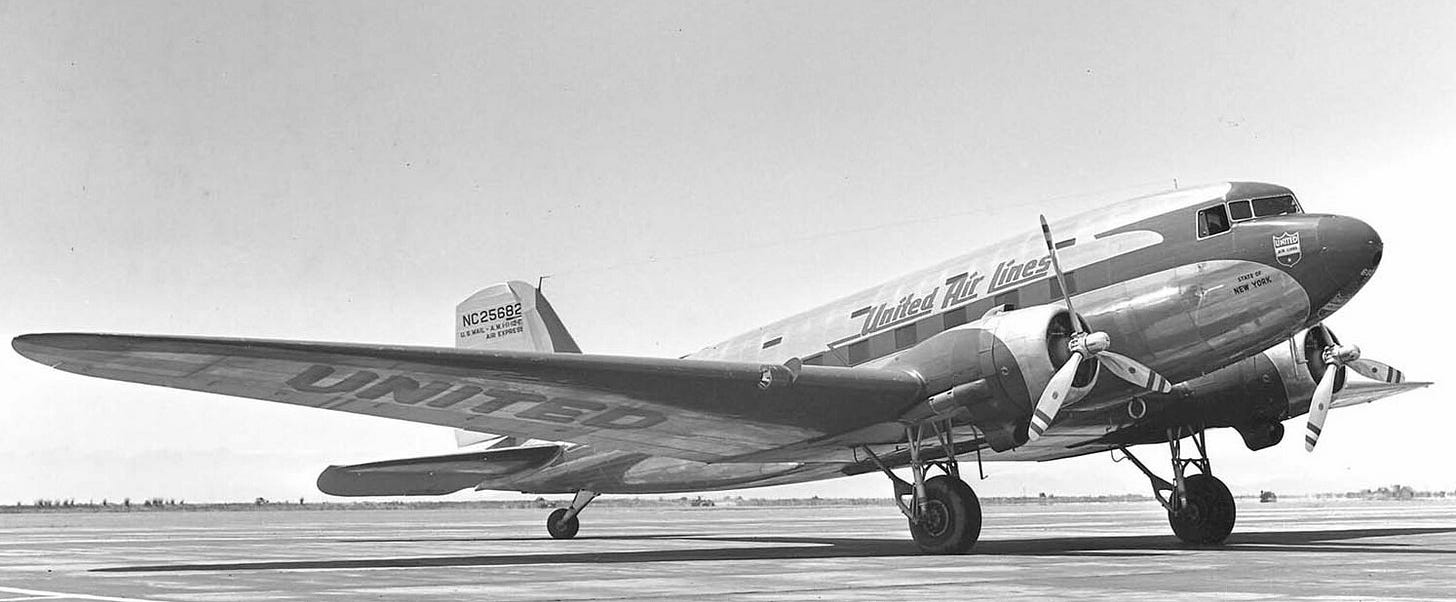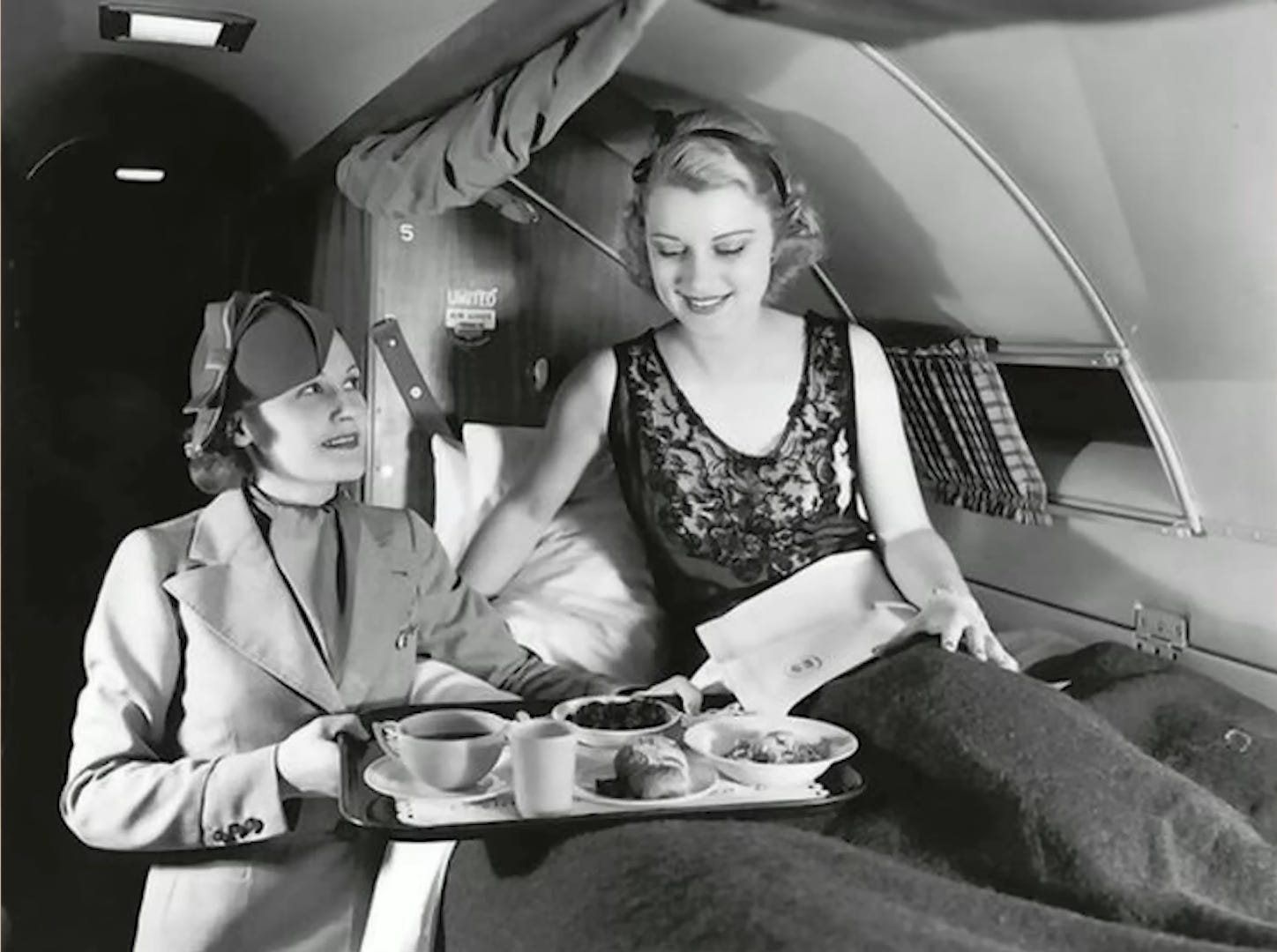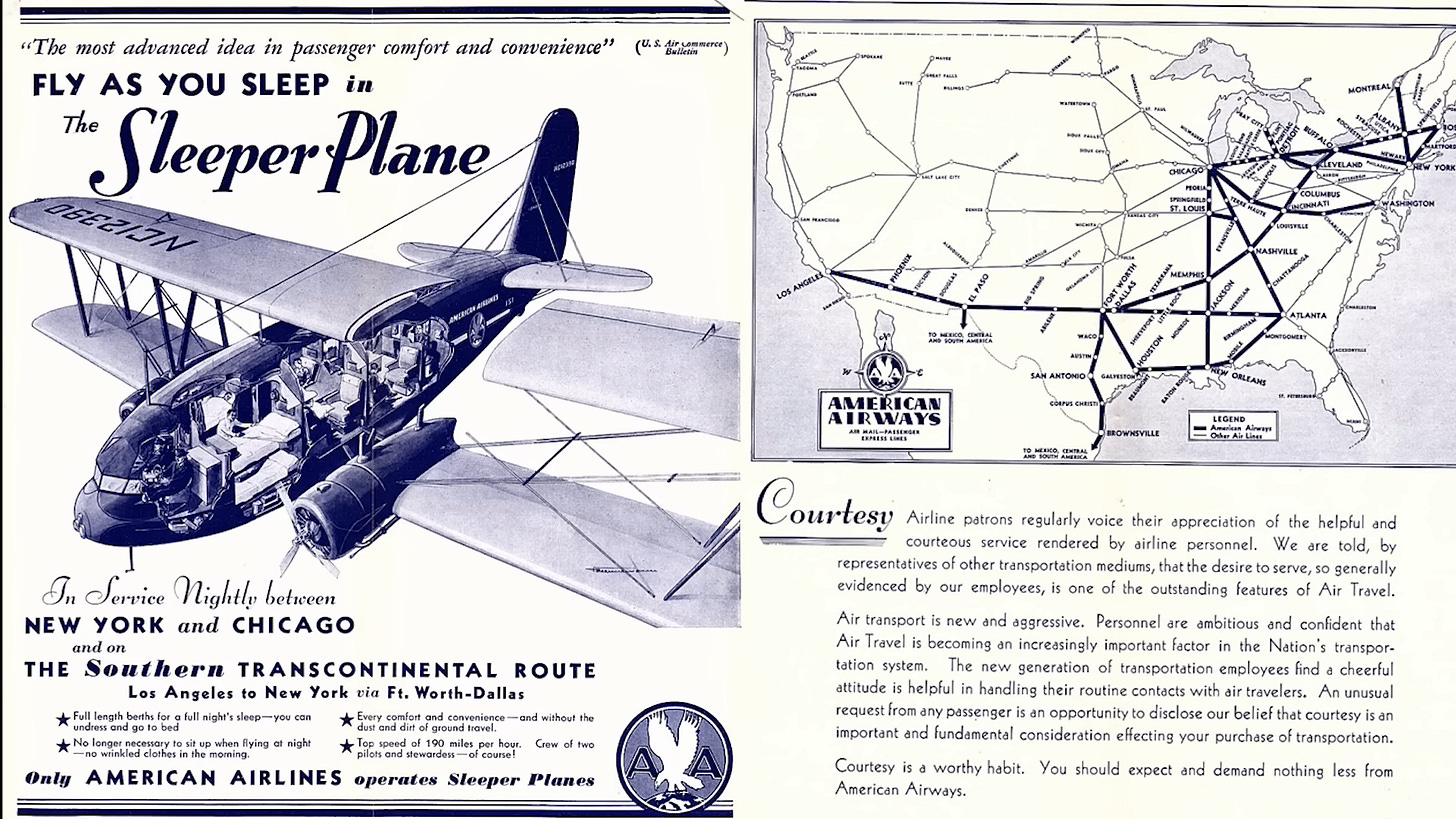A United Airlines DST. Notice the eyebrow windows providing light to the upper berths.
Today’s luxury suites in aircraft (often shown in videos by Will Davis) [1.] actually have their beginnings in the 1930s when American Airlines flew transcontinental sleeper service on Curtiss Condor II airplanes. American Airlines CEO C. R. Smith wanted to replace the Condor II biplanes with Douglas DC-2 monoplanes. There was a problem, however, as the DC-2’s cabin was only 66 inches wide – too narrow for side-by-side berths.
Smith made a fateful telephone call to Donald Douglas, and pitched him with the opportunity to develop a wider aircraft. Douglas reluctantly agreed only after Smith verbally agreed to purchase twenty of the new planes. Douglas’s chief engineer Arthur EW. Raymond presided over the design team for the new transcontinental airplane.
Originally Douglas had wanted to use 80 percent of the components of the already in production DC-2, but the new plane ultimately only used about 15 percent of DC-2 components. The plane, christened the DST, or Douglas Sleeper Transport, first flew on December 17, 1935 – the 32nd anniversary of the Wright Brothers’ first sustained powered flight at Kitty Hawk. [2.]
The plane provided 14 or 16 sleeping berths. Douglas outfitted the same airframe with 21 seats and christened it the DC-3. In 1941 the company ceased production of the DST while the DC-3 would continue in production through the great war and remain a workhorse for air transport through much of the twentieth century.
The DST Sleeper Service seems pretty luxurious for its day.
American Airlines advertisement for sleeper service on the Condor II.






